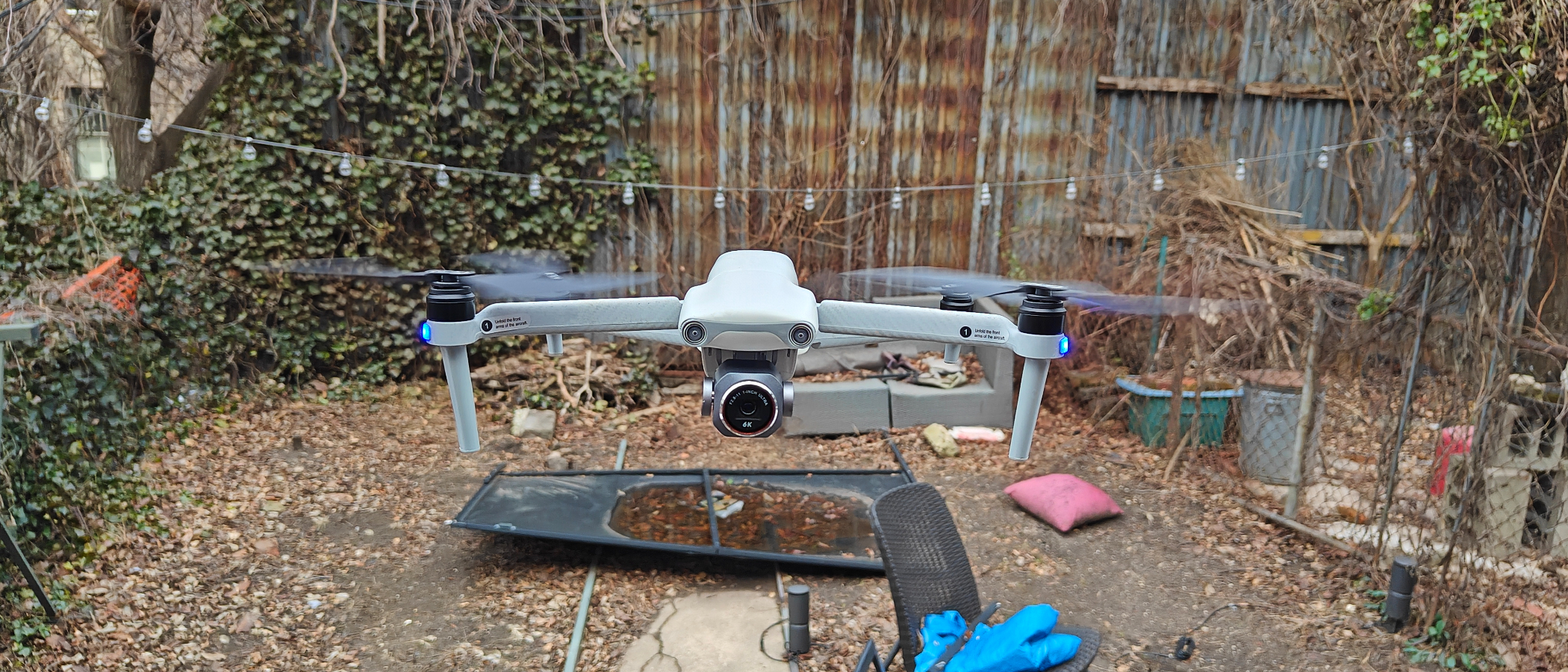Laptop Mag Verdict
The Autel Evo Lite+’s robust build quality and ease of use, combined with excellent hi-res photo and video capture, make it one of the best mid-sized foldable drones you can but if the $1,100+ price doesn’t scare you off.
Pros
- +
Beefy battery for up to 40 minutes of flight
- +
Stabilized 6K30 and 4K60 video
- +
50MP stills in Raw DNG or JPG
- +
1-inch camera sensor with variable aperture
- +
Three-way obstacle sensors
- +
Automated camera moves and Hyperlapse
Cons
- -
Remote lacks a built-in screen
- -
Battery charger is flawed, could use a redesign
Why you can trust Laptop Mag
- Price:: $1,399 (as reviewed)
- 3-Axis Gimbal with 1-inch CMOS Sensor (20 Megapixel 5472 x 3648)
- Intelligent Moonlight Algorithm
- 6K30 Videos & 20MP Stills
- Adjustable f/2.8 to f/11 Aperture
- Up to 40 Minutes of Flight
- Transmit 2.7K Video up to 7.4 Miles Away
- Four Automatic Shooting Modes
- Dynamic Tracking of Fast-Moving Objects
- Ultrawide-Angle Obstacle Avoidance
- Defog & SkyPortrait Modes
- Weight: 1.84 lbs
- Size: 4.8 x 3.7 x 8.3 inches while folded
Photographers and videographers face some hard choices in today's drone market. With so many new options in the past two years, it’s hard to keep up. Autel’s main competition, DJI, seems to have a new drone ready every couple of months, and Skydio continues to own the autonomous drone market. I found the Lite+ offers a blend of DJI and Skydio, with a little Hulk built in.
The Autel Evo Lite+ is a mid-sized folding drone that has become my go-to for a variety of uses, especially when I shoot at night. After over six months of conducting long-term reviews of several drones, it has been the tank. Like any budding drone pilot, I’ve had my share of minor mishaps, but the Autel Lite+ has laughed in the face of my inexperience and said let's get back up in the air every time.
Hop on board, and let me take you on a short flight around the Autel Evo Lite+ drone.
Price and configurations
The Evo Lite+ comes in either a standard kit or a premium bundle. The standard kit consists of the drone, the controller, one battery, propellers, and a charger with all cables, costing $1,149.
The premium bundle adds a soft carry bag, three propeller replacements, two more batteries, a multi-battery charger, and four ND filters. The premium bundle will run $1,399, worth the extra $250. Once you start flying drones, you will quickly realize it’s worth it for the extra batteries and propellers alone.
Design
The basic design of most drones is very similar across brands, especially with smaller and mid-sized drones like the DJI Mavic, Skydio 2+, and Autel Evo. The Lite+ allows you to fold it down for transportation, a game-changing feature the DJI Mavic and ill-fated GoPro Karma introduced in 2016.. It has four pivoting arms that quickly fold out for rapid deployment as the blades remain attached while folded. So all you have to do is unfold, power up your drone and controller, connect your smartphone, and it’s go time.
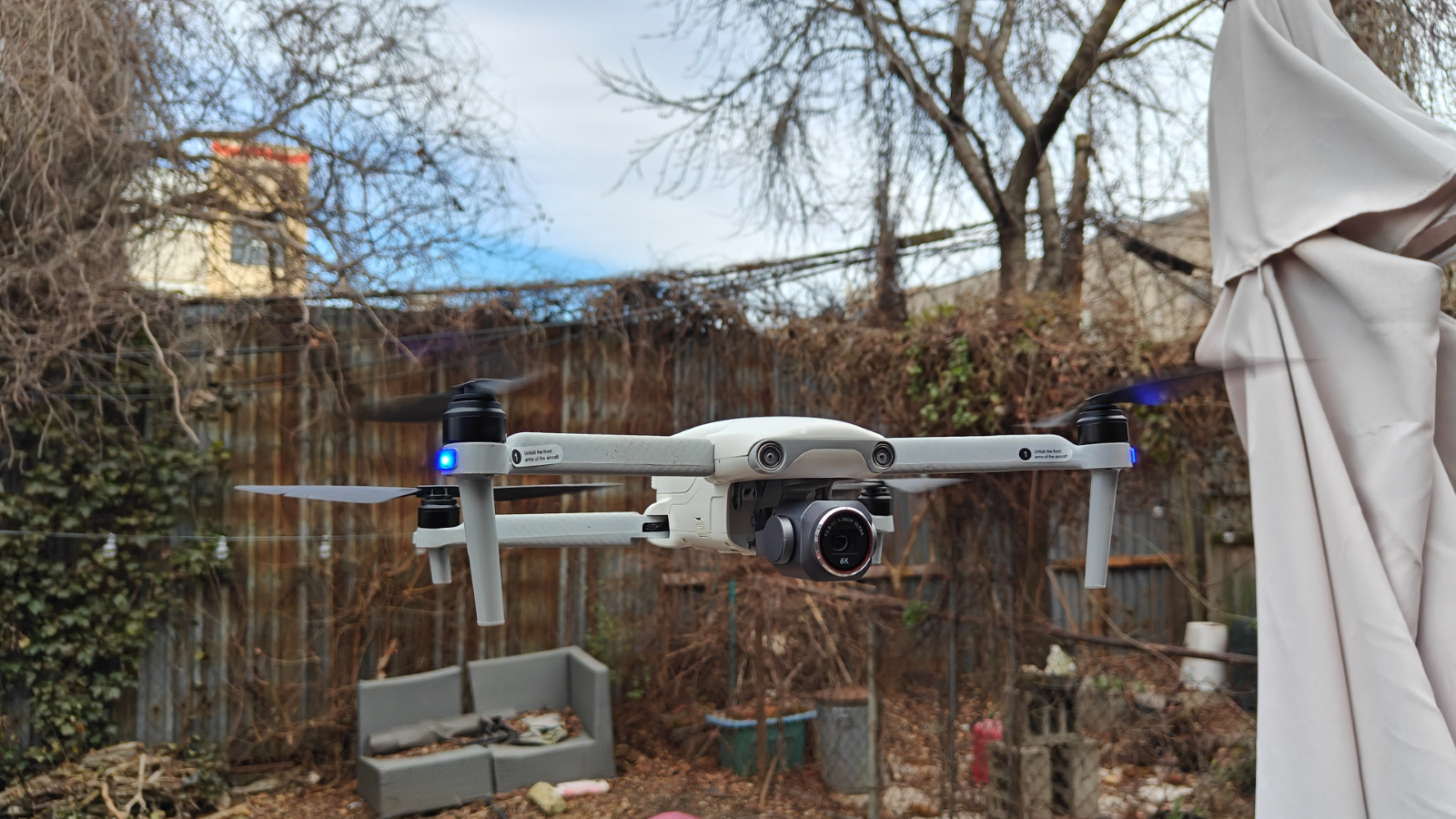
The nose of the Lite+ is fronted by a sizable gimbal needed to control the 1-inch sensor camera. The Autel Evo Lite+ comes in three different colors. You can choose between Arctic White, Autel Orange, and Space Gray. I got the space gray.
Sign up to receive The Snapshot, a free special dispatch from Laptop Mag, in your inbox.
When you first start learning to fly a drone, there will be mishaps and misjudgments in how close you can fly near objects or how fast you can fly within a given space. Autel tries to help you out with visual collision detection sensors on the front, rear, and underside of the drone. You may notice that there are no side detectors, so be careful when making orbital maneuvers.

On the left side of the Lite+, you will find a microSD card slot under a small cover and a USB-C port on the right. Autel also includes 6GB of built-in internal memory just in case you forget to slip a memory card in. Obviously, this won’t hold many high-res photos or videos, so you’ll want to invest in a microSD card. I have been using a 128GB Kingston Canvas GoPlus microSD card to record all of my 5.4K videos.

Under each rotor motor, small pegs give the drone enough ground clearance for take-off and landing.
One of my favorite design elements on the Autel Lite+ drone is the bright LED lights that you will find underneath the body and on the end of each arm, making the drone super easy to see in low-light conditions. The dual-blade propellers on the Lite+ are similar to props you will find on other drones, and they use centrifugal (or centripetal) forces to orientate them when spinning. I also like how easy it is to remove them if one gets damaged. You can just pop them off with your hands. No special tools or expertise is required.

Overall, I am super impressed with the quality of the materials used in the Autel Lite+ drone. The build quality is excellent and will easily survive minor bumps, crashes, and mishaps. The Autel allows me to be a bit more daring with my flying, as over the course of several accidents I had with it early on, I discovered that even the areas I expected to be weaker tolerated rough flying and impact extremely well. I advise you to build up your flying time and experience before jumping into sport mode because the Lite+ can boogie and get away from you quickly.
Controller
Autel’s controller is well made and will remind you of an Xbox or other gaming controller, which I like because it gives novice drone pilots something they will find familiar. Once you charge it up and screw in the little control sticks, you’re good to go. I found the controller highly accurate, offering subtle control over the drone's movements, but for super smooth video, I would choose the smooth mode in the app, which we will address in a later section.
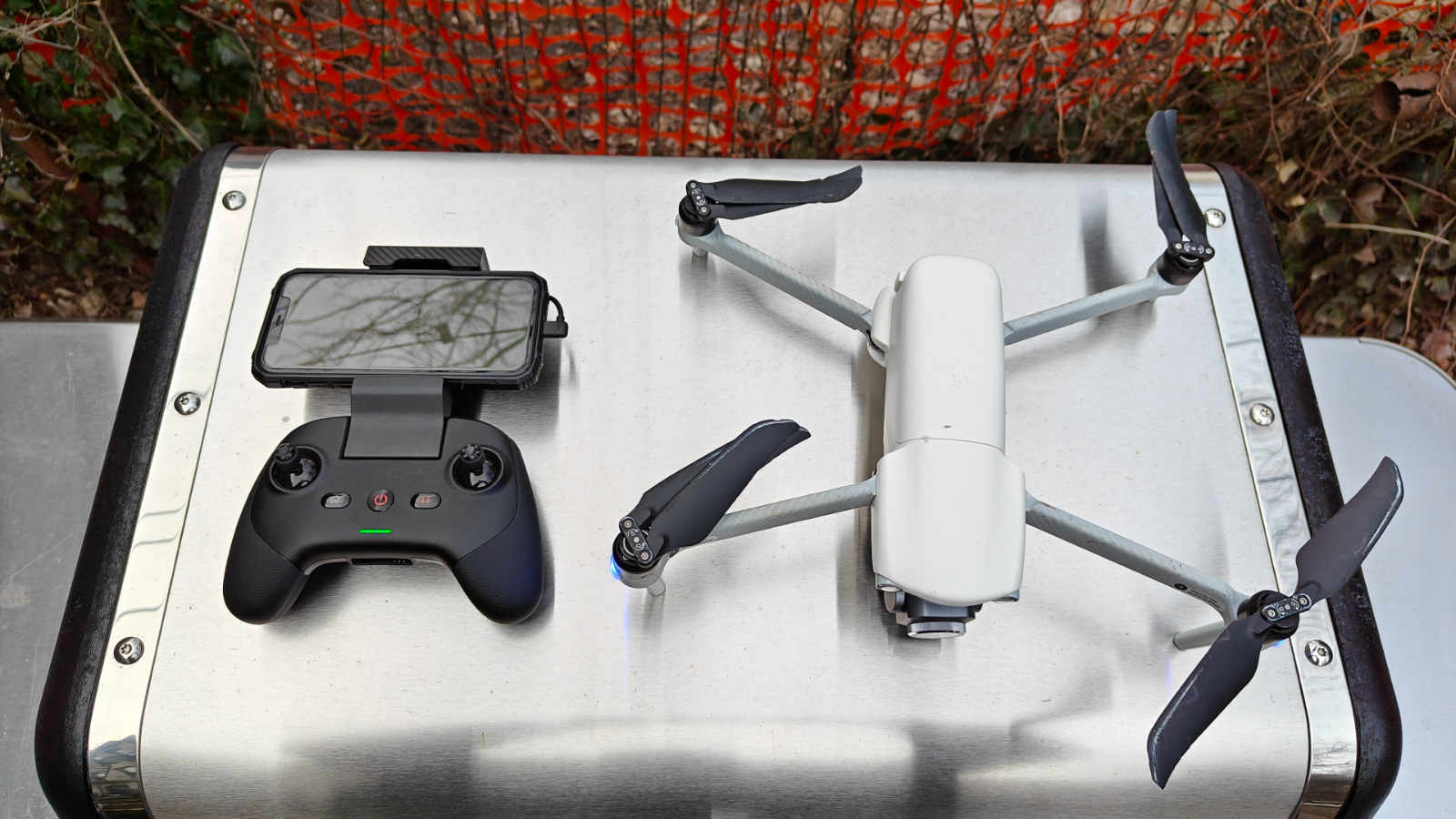
At the top of the controller, a spring-loaded arm extends to hold a smartphone securely above the controller. Autel includes a cable for Android or iPhone in the standard and premium bundles. You will also find a power adapter to charge the batteries and the remote. The drone and controller can also be charged with a USB-C cable. The charging port is located at the bottom of the controller, with a USB-C port right behind the spring-loaded arm for connecting your smartphone.
Like an Xbox controller, there are shoulder buttons along the top edge used to control certain functions. On the top right edge, you find the take photo or record video button; on the left, you find a general function button you can program to angle the camera or switch speed modes.

On the front of the remote, is the Home button to bring your drone back quickly before the battery dies (guilty), the power button, a pause filming button, and a green power-on indication light just beneath the buttons. Overall, the controller feels good in the hand with its rubberized sides and hard plastic shell conforming nicely to your hands.
Flight
Once you’ve flown a few drones, transitioning from one to the other is a quick adjustment, and thanks to its gamepad-like controller, it's easy even for first-timers. Flying the Autel Lite+ is super enjoyable because due to having fewer take-off protocols built-in, it will take off from virtually anywhere there's a clear space.
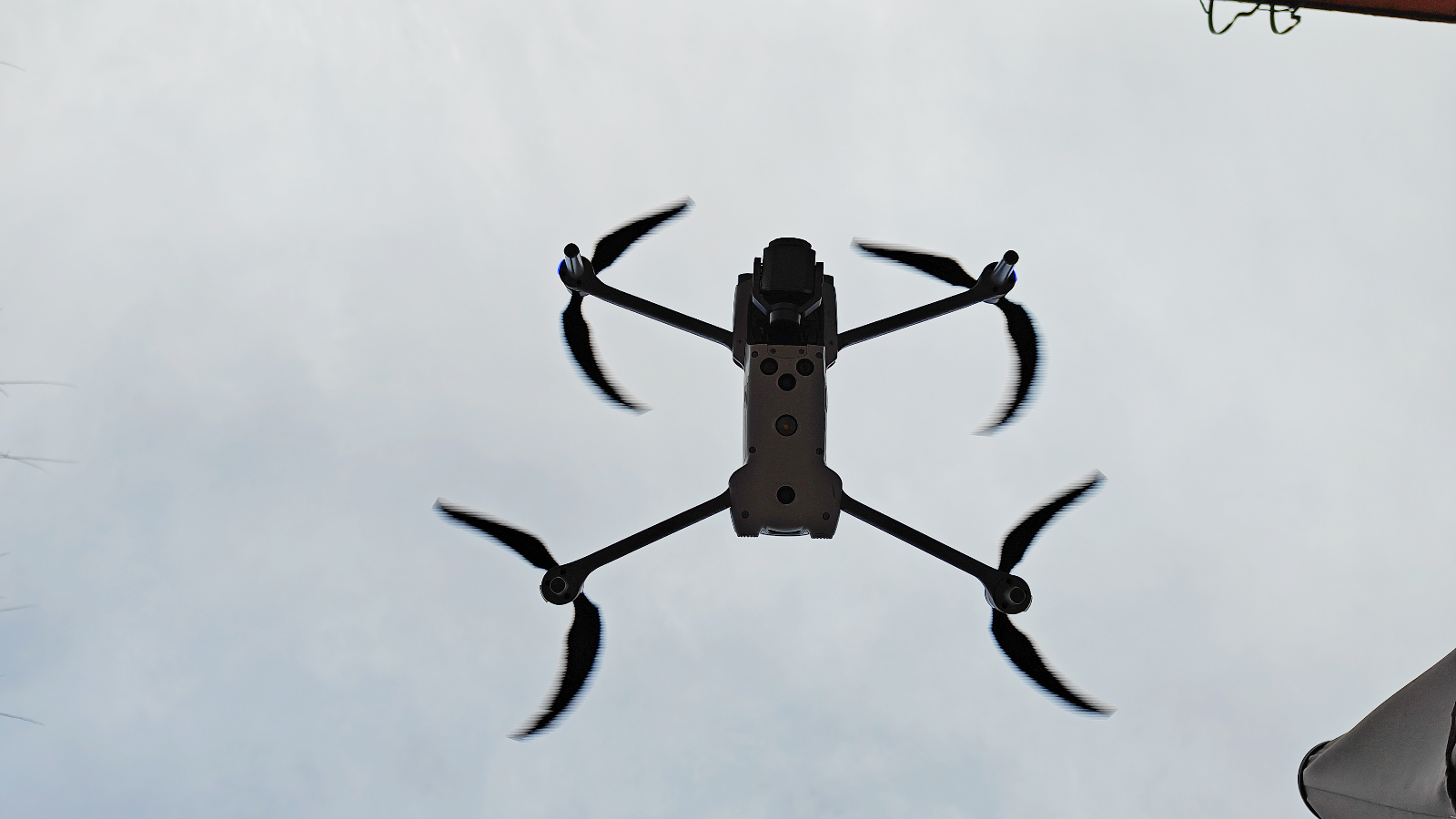
What became immediately obvious to me as I flew the Evo Lite+ is that it is powerfully fast, which comes in handy when avoiding objects during a flight that you may not have accounted for. Also, its power allows for excellent precise control and helps create some dramatic in-flight footage.

For example, I could reach the legal height limit in my area (400 feet) in less than 20 seconds. Sadly, I can’t test the actual height limit of 16,404 feet, but it's nice to know it's possible. I would advise against trying it out or you will likely have the FAA knocking at your door. The Autel Drone can reach more than 40 miles per hour speeds with a top speed of 42mph. In a small space, that’s dangerous, so if you’re going to go fast, Ricky Bobby, I suggest ensuring you’re in an area with ample room or acreage.
The controller and Autel Evo Lite+ are rated at a distance of up to 7.4 miles which is pretty far and great if you get the chance to operate it, let's say, near a nice long beach. Also, video transmission to your device will be displayed in 2.7K, which is excellent, but it will deteriorate once you fly out over 0.6 miles, then the resolution will drop to 720p. At shorter ranges, being behind buildings or other obstructions had minimal impact on the video quality or the control responses.

Compared to lighter drones like a DJI Mavic mini, the robust Evo Lite+ handles blustery days well. You will notice a minor difference from drone to drone in how they handle wind, but the Evo does an great job of filming stable footage in windy conditions or when you’re flying fast and fighting wind resistance. The flight experience is smooth and stable, and the Autel Evo Lite+ performs extremely well in low-light flights, where some other drones struggle.
Autel Sky app
The Evo Lite+ comes with Autel’s Sky app, which is free to download to your phone, and you will find it very similar to applications used by DJI or Skydio. It includes options for shooting “quick shots” and automating various drone moves like a 360-degree video of yourself or an object.
In settings, you will find the usual options for controlling what happens when the drone disconnects, its return-to-home altitude, and the different flight modes.
When you first set up the drone, it will default to novice mode, with limited height and range capabilities. Once that mode is deactivated, you can use it as you wish within the limits of the laws in your area.
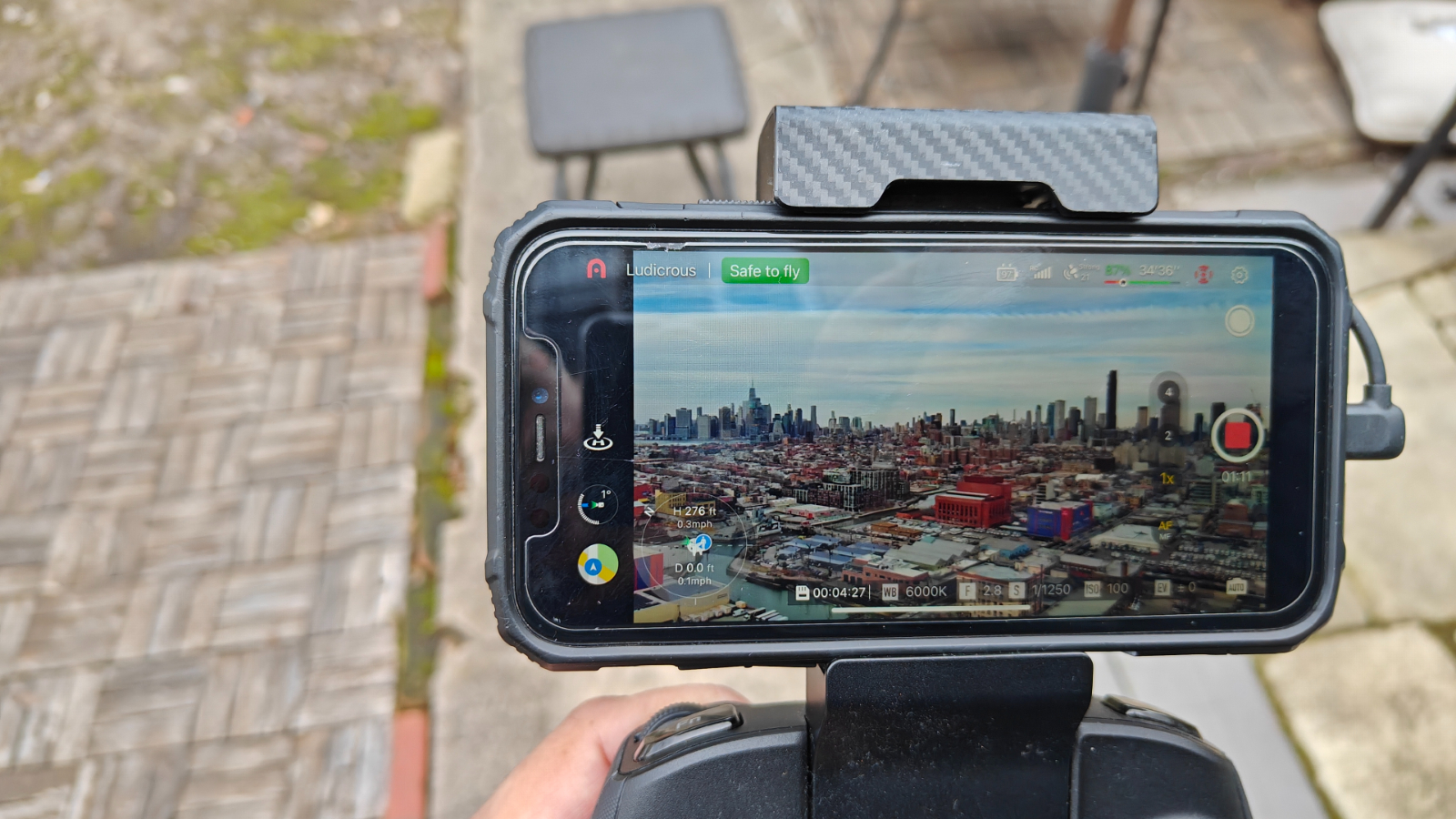
When you choose to fly in smooth and standard flight modes, the collision detection system is enabled and will provide the user with visual and audio feedback if you are moving toward obstructions. If you ignore the warnings and keep pushing on, the drone will refuse to move in the direction it considers hazardous.
Depending on your experience and what you’re trying to achieve, this can be an annoying feature, but it exists to help you avoid damaging your drone and dodge huge repair costs. However, for the daredevils, it is possible to disable it, and it will turn off automatically when you’re in Sport mode and flying at lightspeed. Just be wary of thin or smallish objects while flying, such as thin branches, twigs, cables, or electric wires, because the avoidance systems of drones are not perfect, and you can wreck your drone by crashing into them.

You can select photo or video mode via the app if you wish to shoot at 1x magnification or up to 4x magnification. You can choose autofocus or manual and adjust the white balance, ISO, and shutter speed.
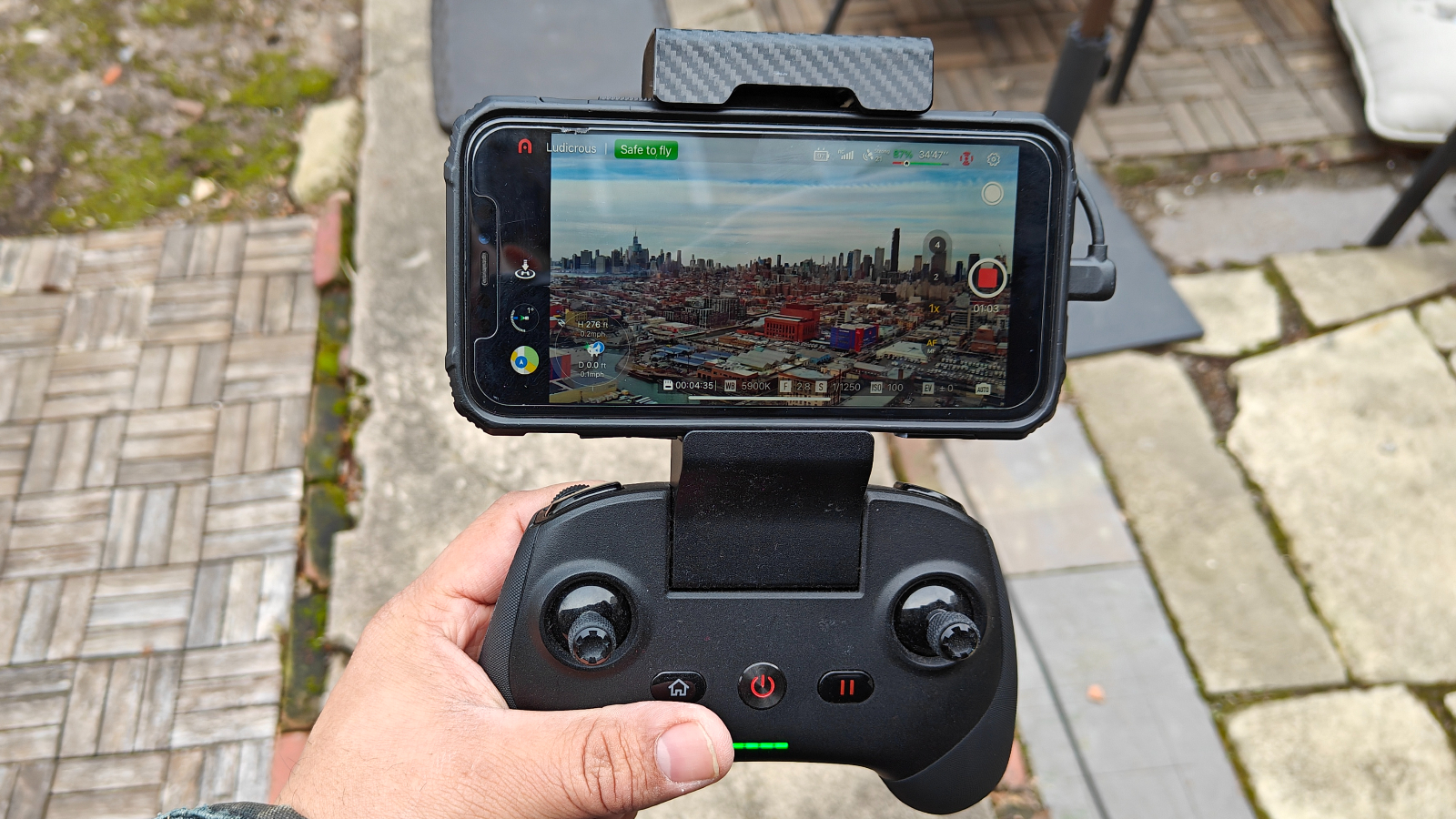
On the lower left side of your screen, while in the app, you will notice your altimeter, which measures your height and distance, and the launch icon. On the right is where your camera control and setting icons are. At the top, you will find your warnings, battery life, and the settings icon. Lastly, at the bottom are more fine camera function controls.
Video and image quality
Although it’s stated that it shoots 6K footage, its maximum resolution is 5472 x 3076 pixels at 30 fps. It is similar to the DJI Air 2S except that the 2s has a fixed f/2,8 lens. At the same time, the Lite+ can adjust its aperture from f/2.8 to f /1.1, allowing you to lock in the frame rate while also controlling the amount of light and exposure, lessening the need to use the supplied ND filters. However, if you use the ND filters, you will get better control over the depth of field.
Having the 5.4K resolution to work with in post is wonderful, especially when you dropped the resolution to 4K or FHD (1080p) because you get all that extra image data and less quality loss.

Using the zoom, you will find the more you zoom in, the more pixelated the image becomes, which is standard when relying on digital rather than optical zoom. I suggest not zooming past 4x, you can push it to 16x, but the images aren’t worth it.

Lowlight and nighttime shooting are where the Evo Lite+ shines. It comes with night photography and video modes that can boost the ISO up to 64,000 while keeping the image from becoming too grainy and unusable. However, I did find my best images and videos were shot in normal daylight, only sometimes adjusting the exposure or ISO. It captures excellent quality stills and videos in fully automatic mode.
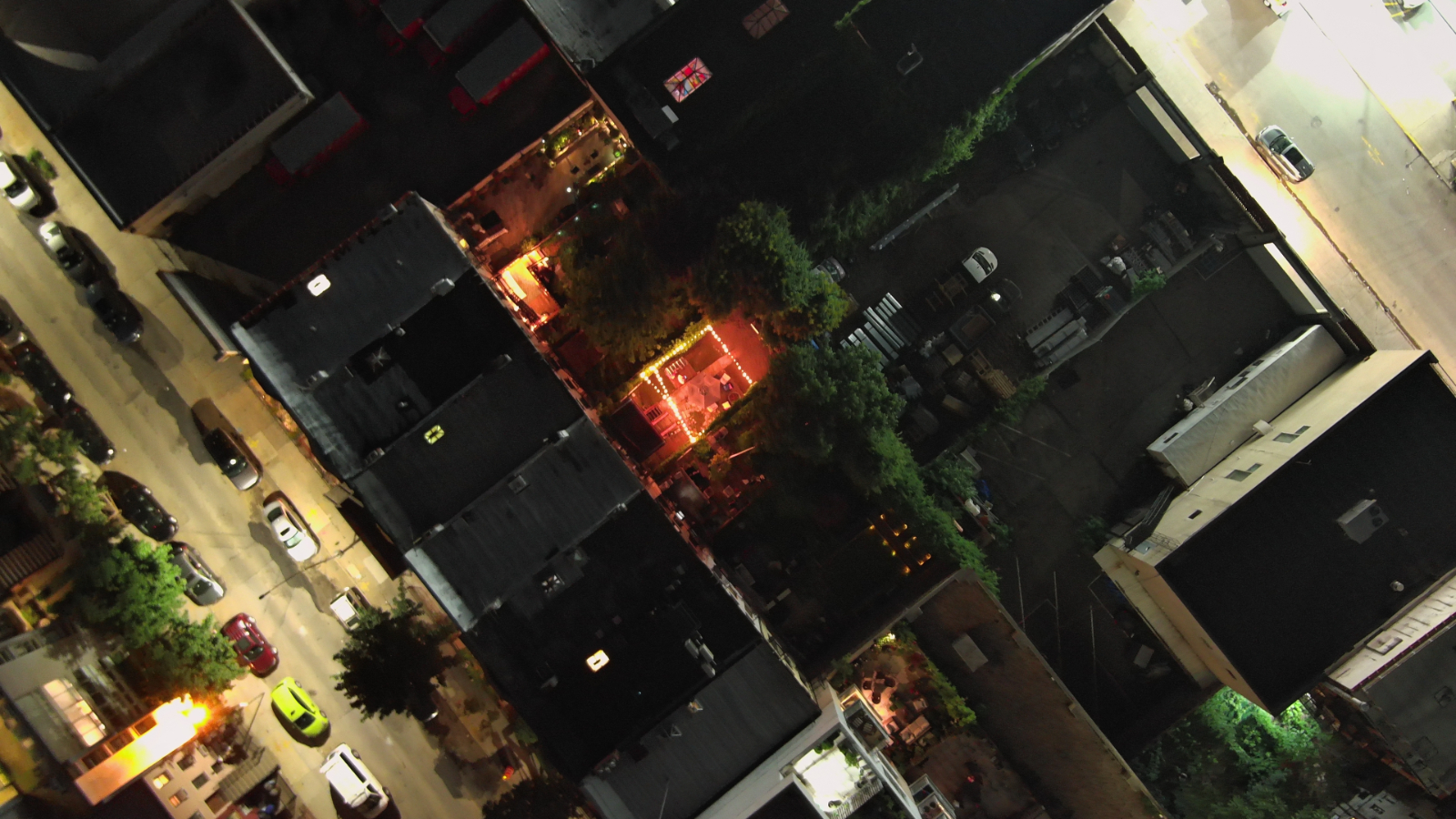
You will also find various panoramic, spherical,l, and wide-field shooting modes in the Autel Sky application. Overall, the image and video quality on the Lite+ is excellent, with first-rate autofocus technology. Thanks to its 4-axis stabilization and the stability of the Lite+ while flying, you will get hours of high-quality footage.
Battery life and charging
The Autel Evo Lite+ battery slides in from the rear, connects to the body, and includes the power-on button. The battery capacity is a massive 6,174mAh (68.7 Wh), which is significantly larger than the DJI Mini Pro 3’s 2,453mAh battery, which averages a 34-minute flight time, but the Lite+ is a bigger drone.
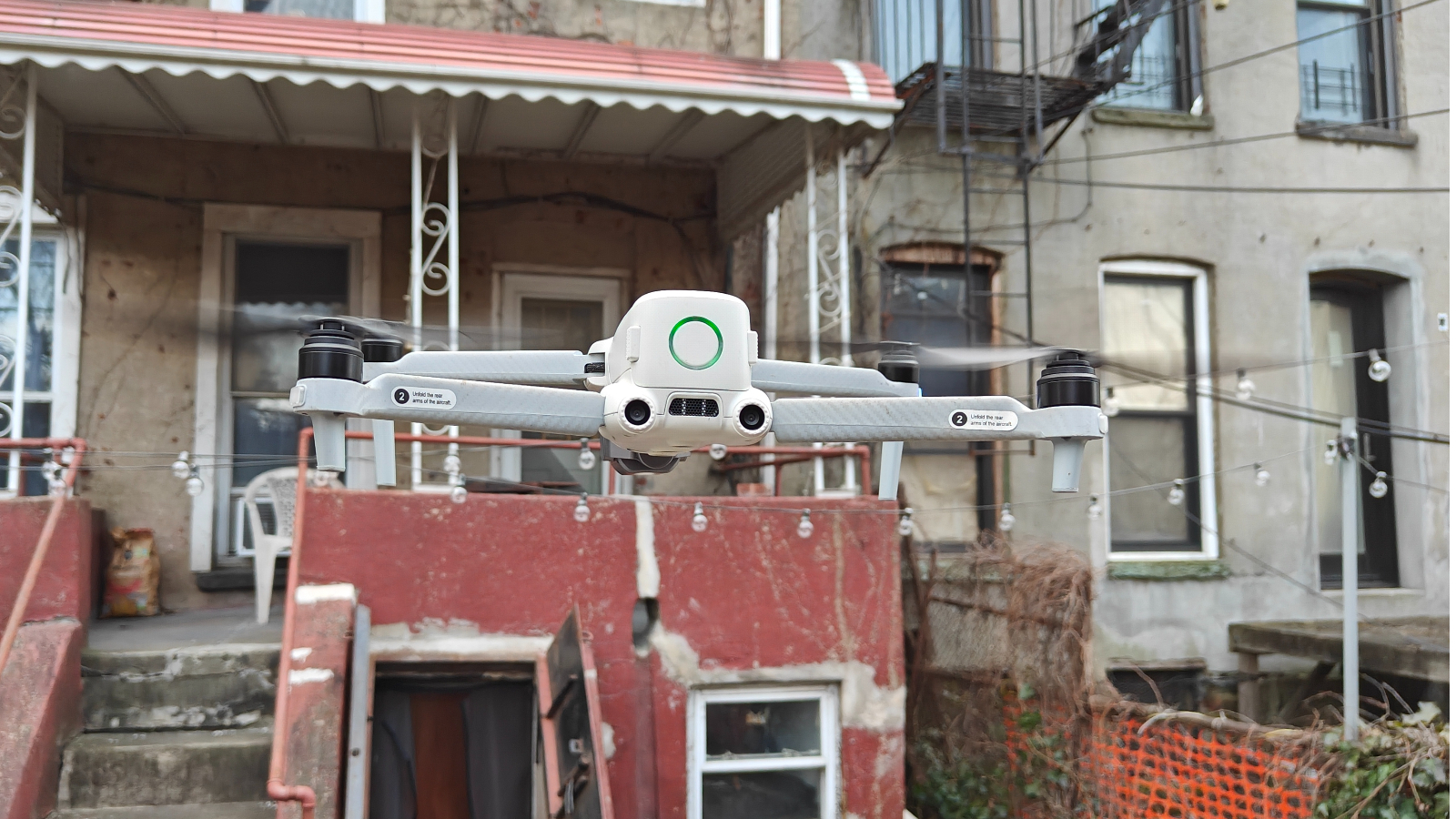
The Autel Evo Lite+ is rated at 40 minutes of flight time on a single charge, and in my use, I found that I could get up to 45 minutes depending on how I flew and how much I was filming versus shooting photos.
It is not recommended you keep flying once the battery life drops below 20% and that you should return to base and switch out your battery.
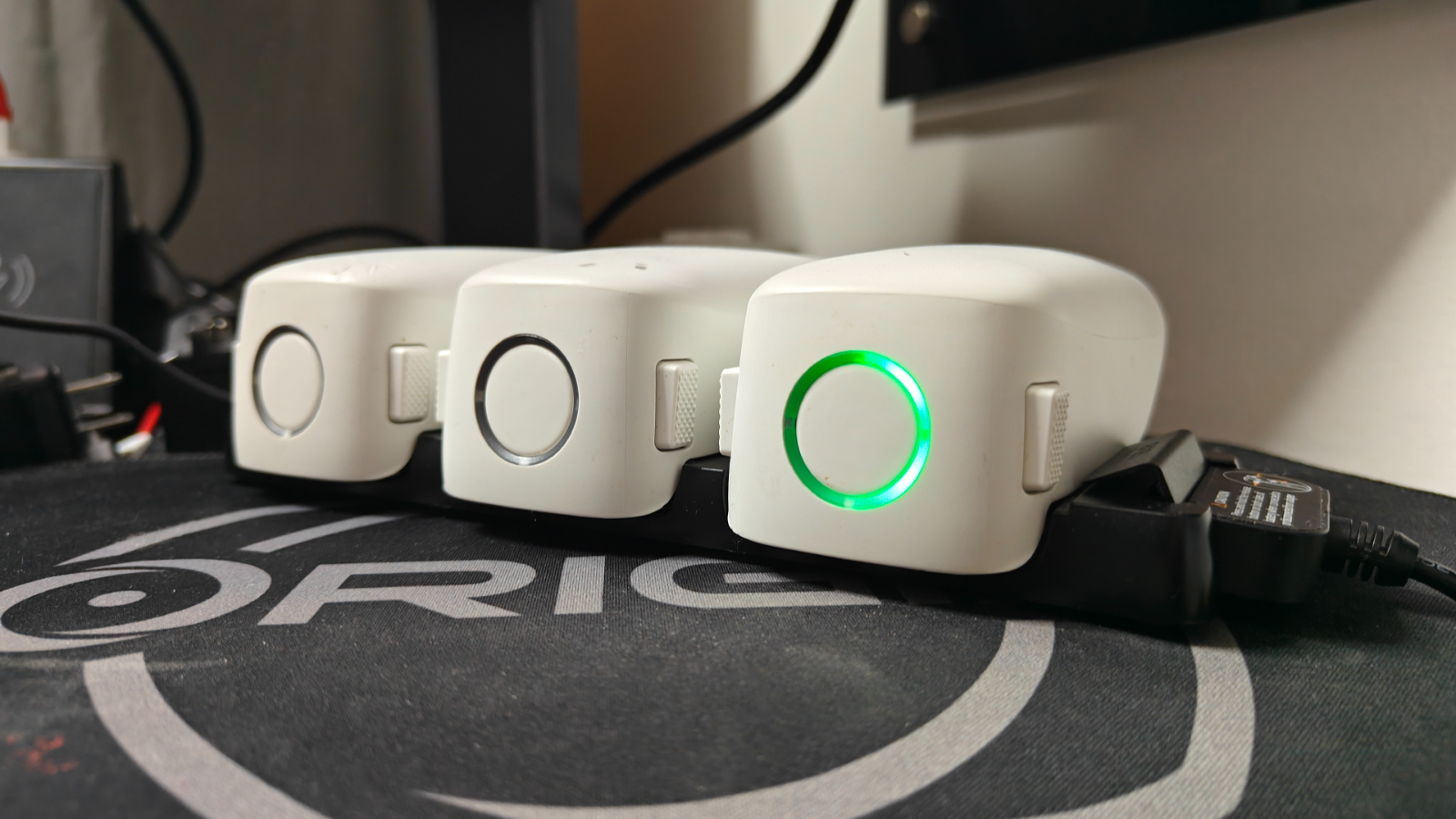
I will add that the triple battery design is a little flawed and easily disconnects. Autel’s power connection is flawed as it doesn’t stay connected easily, and several times it would just slip off or pop off during charging unless I had it lying completely flat. Although the batteries remain secured in their charging station, the power cable seems to have a mind of its own.
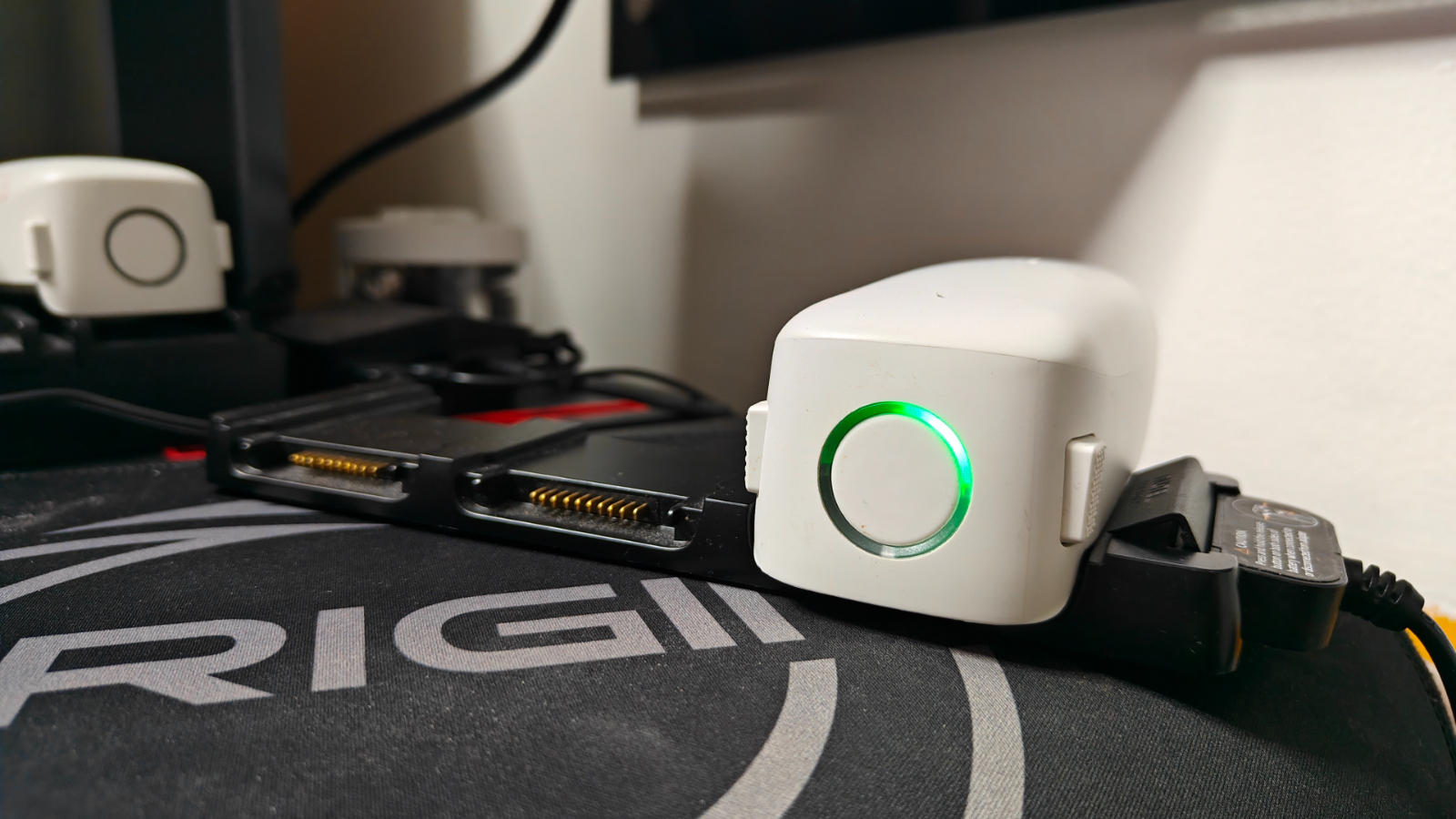
It’s not a major flaw, but it was sometimes annoying. However, the batteries will take about 90 minutes to reach a full charge when it remains connected.
Bottom Line
During my many months with the Autel Evo Lite+ drone, I have to say it has become one of my top three drones. It also was the drone that made me want to take my FAA Part 107 commercial drone license test. Thanks to its longer-than-average battery life, and powerful and robust design, it makes free-hand flying fun.
If you’re a beginner or intermediate drone pilot, the Autel Evo Lite+ offers robust build quality, a potent 1-inch camera sensor, and an easy-to-use app and controller. It’s worth every penny of the $1,399 our bundle package costs. It just flies strong. Of all the drones I have flown, it is the A-10 Thunderbolt II (a.k.a. “The flying tank”) of drones, and it’s a keeper.

Mark has spent 20 years headlining comedy shows around the country and made appearances on ABC, MTV, Comedy Central, Howard Stern, Food Network, and Sirius XM Radio. He has written about every topic imaginable, from dating, family, politics, social issues, and tech. He wrote his first tech articles for the now-defunct Dads On Tech 10 years ago, and his passion for combining humor and tech has grown under the tutelage of the Laptop Mag team. His penchant for tearing things down and rebuilding them did not make Mark popular at home, however, when he got his hands on the legendary Commodore 64, his passion for all things tech deepened. These days, when he is not filming, editing footage, tinkering with cameras and laptops, or on stage, he can be found at his desk snacking, writing about everything tech, new jokes, or scripts he dreams of filming.
